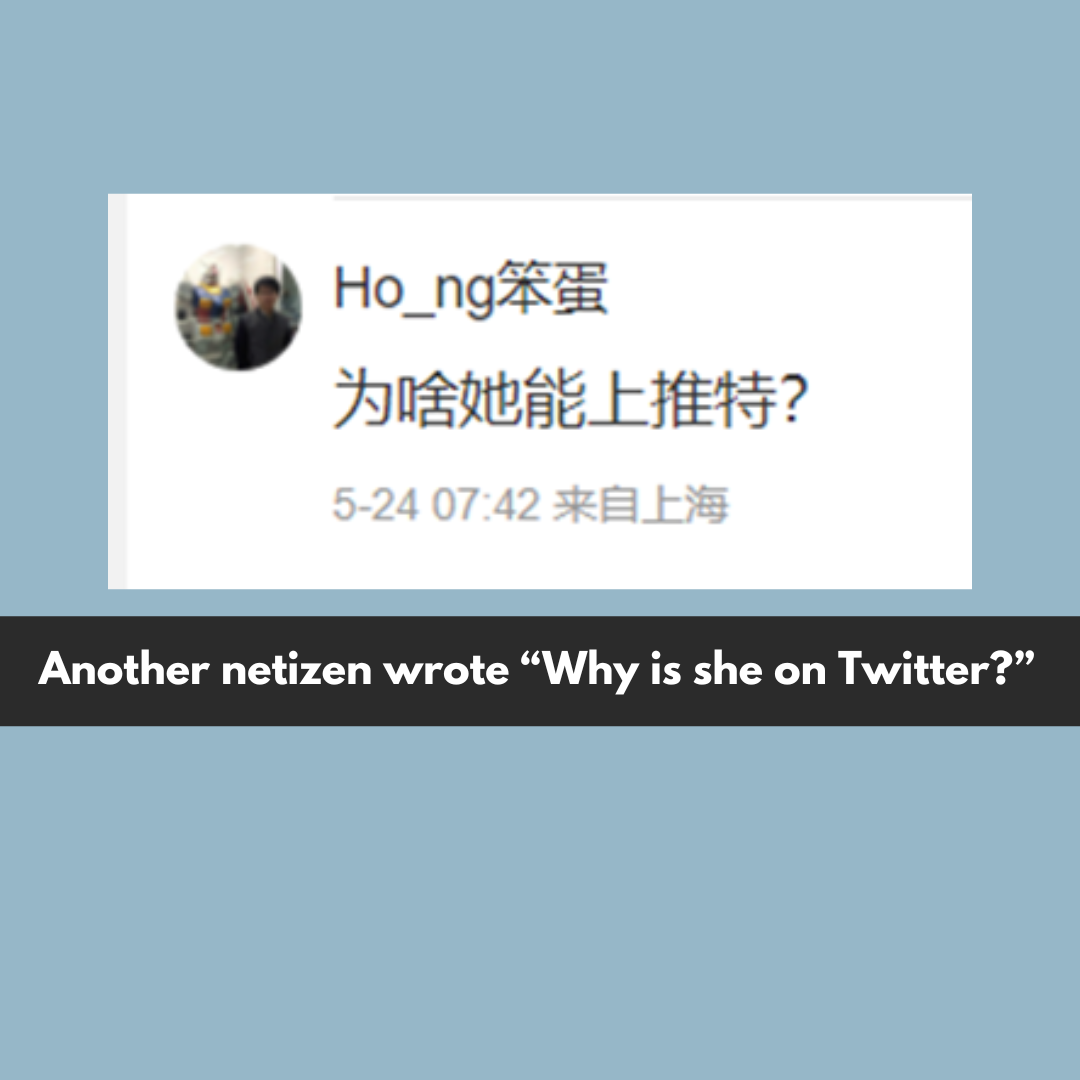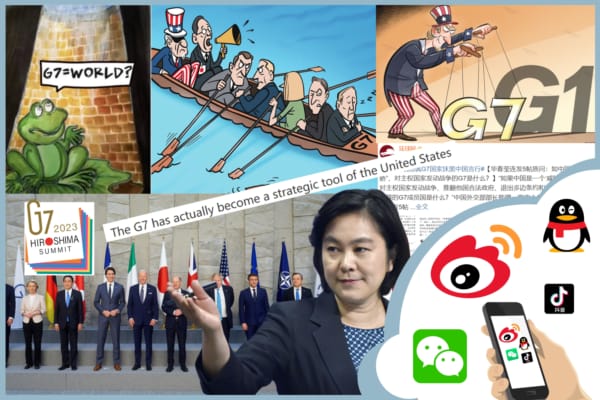The annual summit of the world’s richest countries comprising the G7 (Canada, France, Germany, Italy, Japan, the UK and US) wound up over the weekend in Hiroshima, Japan. China, though the world’s second largest economy after the U.S., is not a G7 member, clearly a sore point in Beijing. Nor did it help that the G7 was critical of China backing Russia in the context of the Ukraine war.
In response, Chinese newspaper headlines and official media outlets have been critical of the G7. China’s foreign ministry accused the G7 of “smearing” and “attacking” China. The G7 was even described as a “failure” on the main page of the English language China Daily on May 22.
Much of this criticism flowed from what Beijing alleged was the “hype around China-related issues’ as well as the G7 Communiqué, which expressed concern about China’s growing global influence. While the summit did not call upon its members to decouple from China, it did urge “de-risking”, meaning they should lower the risk to themselves from the China relationship. China was named, in largely negative terms 20 times in the declaration, a considerable rise from the 14 mentions it merited at the G7 summit last year. And most of the G7 discussions about China centered on its dealings with Taiwan, problems in Tibet and Xinjiang including human rights violations, Beijing’s meddling in democratic institutions and responses to Russia’s military aggressiveness.
On May 22, China’s official media sources covered the G7 extensively and published numerous items, including:
An article from China Daily (Chinese) titled “The G7 has actually become a strategic tool of the United States” (May 22). The article says that “The United States manipulates the G7 to engage in political confrontation, and the G7 has actually become a tool of U.S. foreign and strategic policy”.

Another Chinese newspaper, People’s Daily, published an item with a cartoon showing a man digging a road wearing the American flag and proclaiming, “For Economic Security,” while the story’s header asks the question, “Security or Hegemony?”

Another article from Global Times was titled “G7 has descended into an ‘anti-China workshop”. A front-page headline described the summit as “manipulative,” and its op-ed implied that the Group of Seven had turned into an “anti-China workshop”. The article featured a graphic, showing representatives of the seven G7 countries seated in a boat, with Japanese Prime Minister Kishida shouting instructions that don’t appear to be registering with the others. The illustration gives the impression the G7 is a divided house, clearly something China wishes for.

Another article from People’s Daily (Chinese) titled “The G7’s power and influence is gradually diminishing” was posted on May 23.
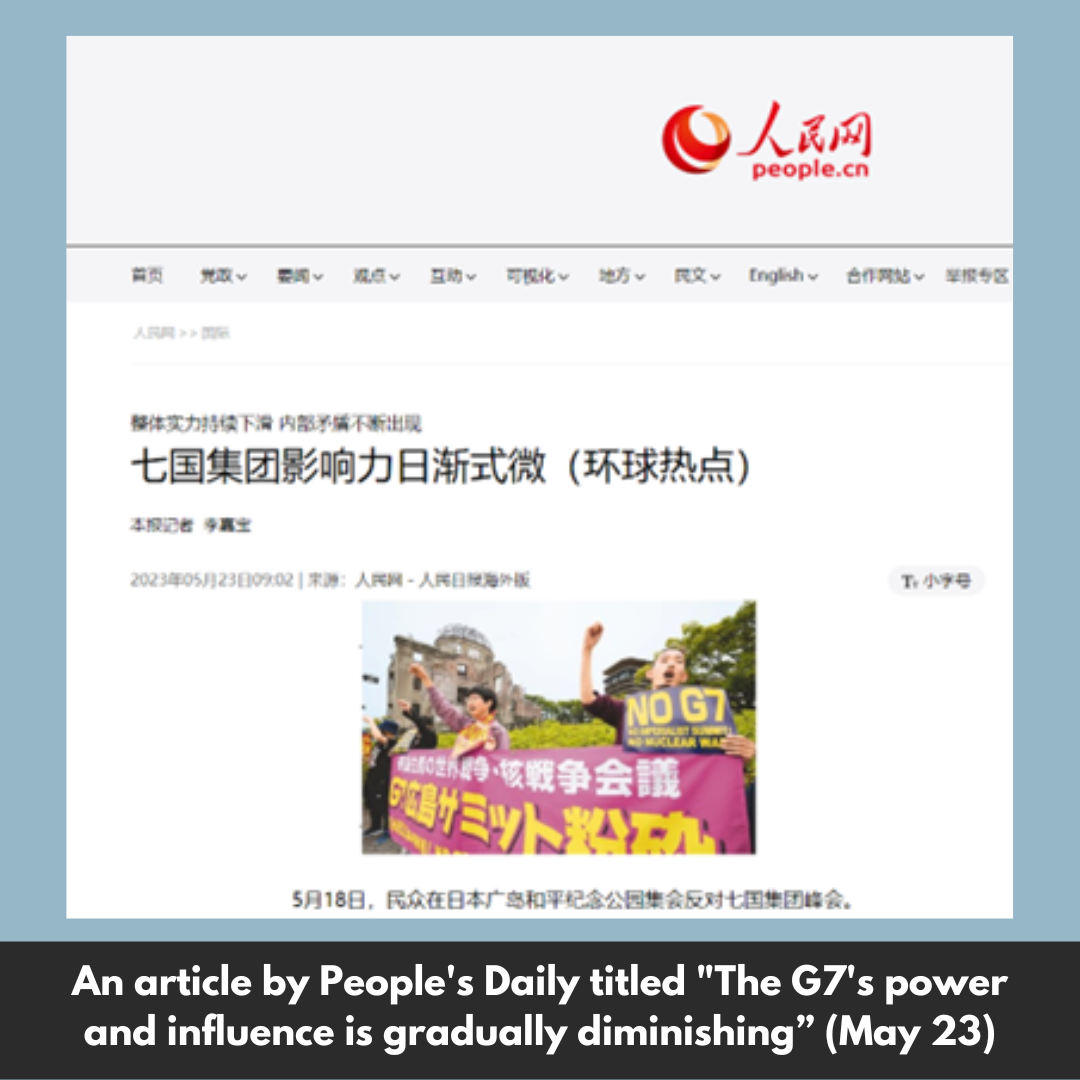
On Chinese social media many hashtags criticizing the G7 were posted by official media outlets. From China’s perspective, the G7 is unwilling to go beyond its own distorted world view in which China is labeled as a threat.
China’s foreign ministry spokesperson Hua Chunying tweeted frequently on the G7 and was confrontational. She tweeted a picture of a frog sitting at the bottom of a well, gazing up at the sky and musing, “G7 = world?”
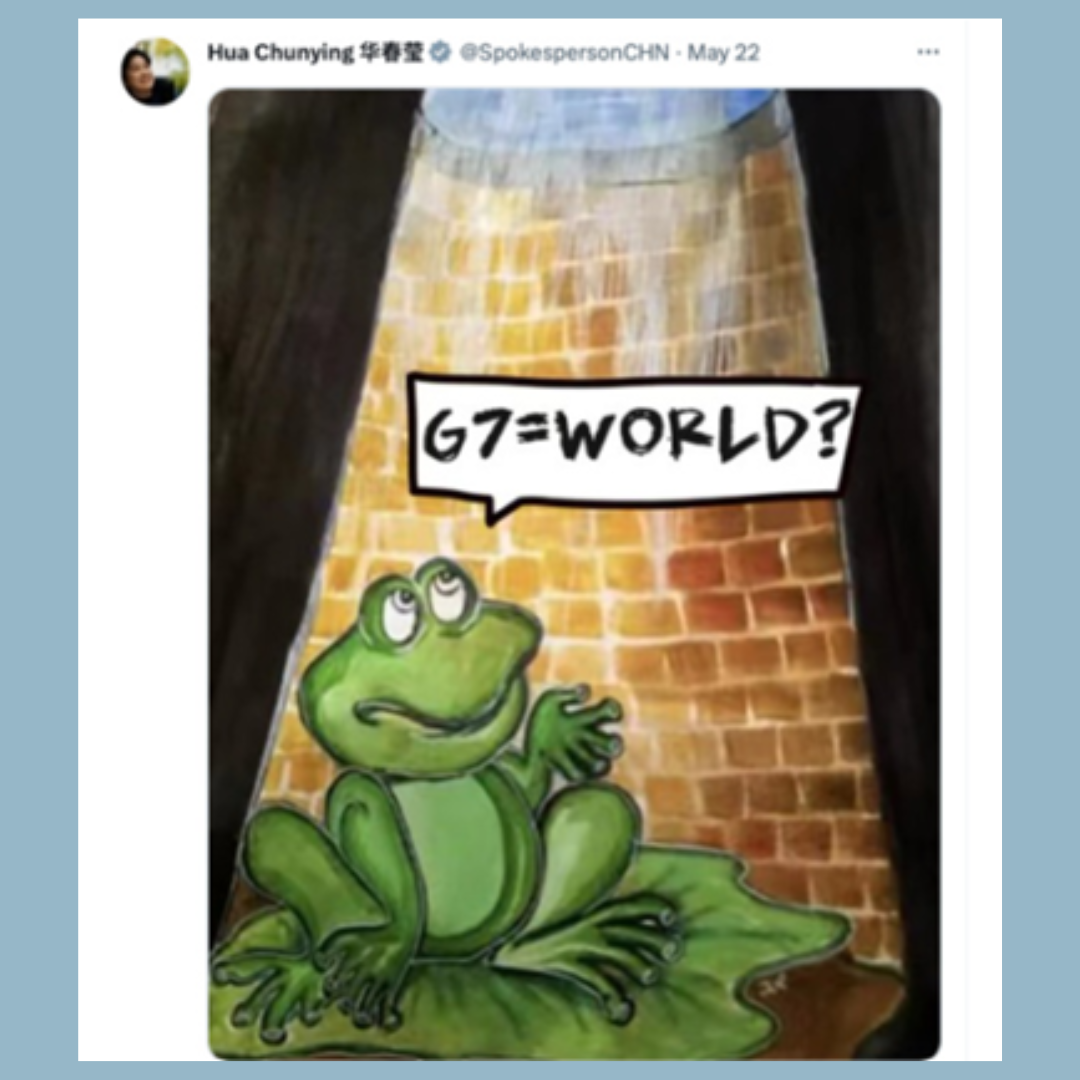
This is a direct allusion to the well-known Chinese fable about a frog in a well that refuses to accept a turtle’s counsel that the world is bigger than what he can see from the well. The frog adamantly maintains that nothing lies beyond what he can see and rejects the existence of an outside world. This idiom is frequently used to characterize people who show ignorance and refuse to grasp things from perspectives other than their own.
On the same day, Hua Chunying also sent out a number of tweets that targeted the U.S. and were later shared on Weibo by China Daily, which started the hashtag “Hua Chunying Fires Back with Series of Tweets to Counter G7’s Smear Campaign Against China”.
This hashtag received a small number of reads—7,43,000 to be exact. The Chinese newspaper Huanqiu News later shared this hashtag, which received 2 million reads.
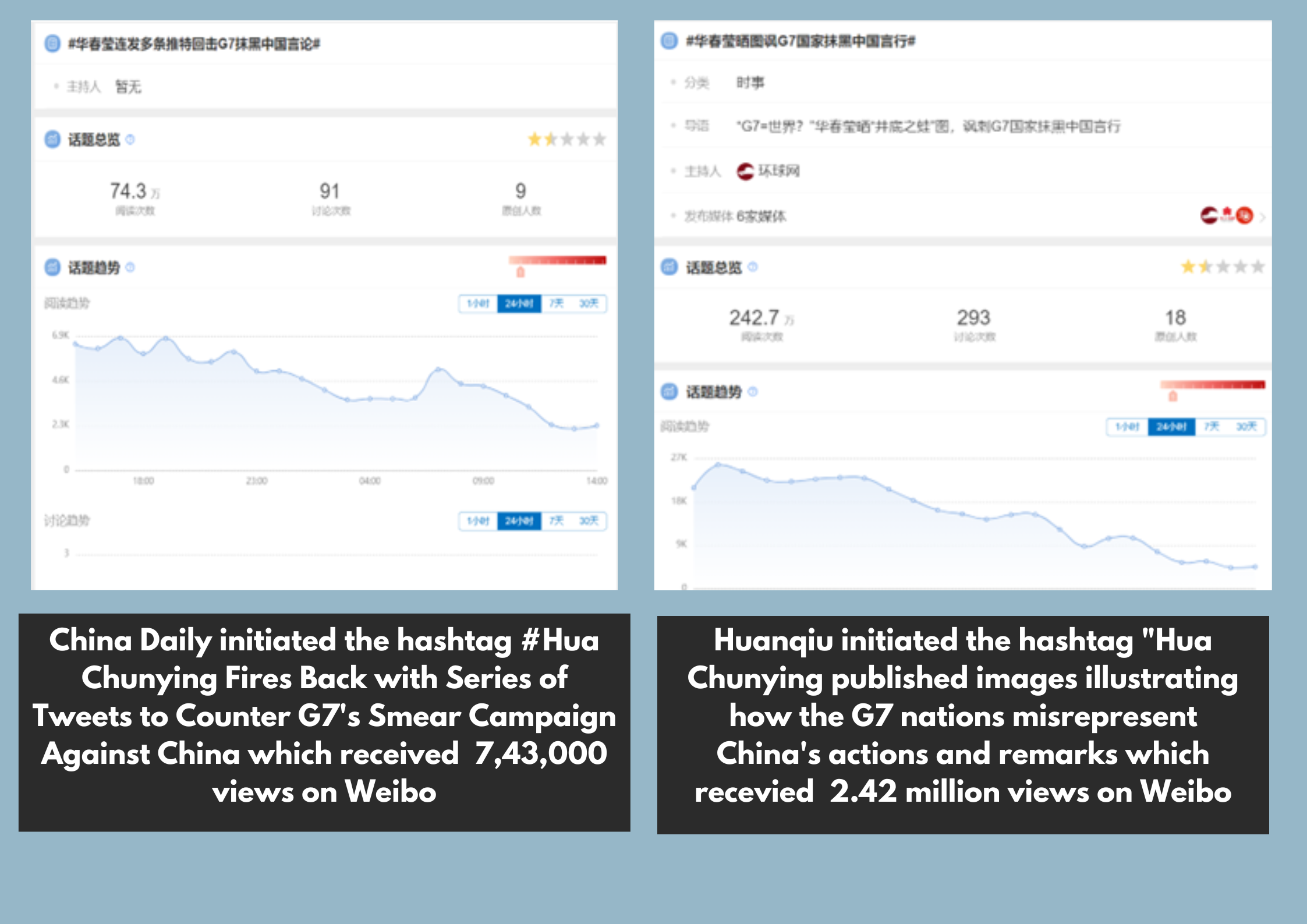
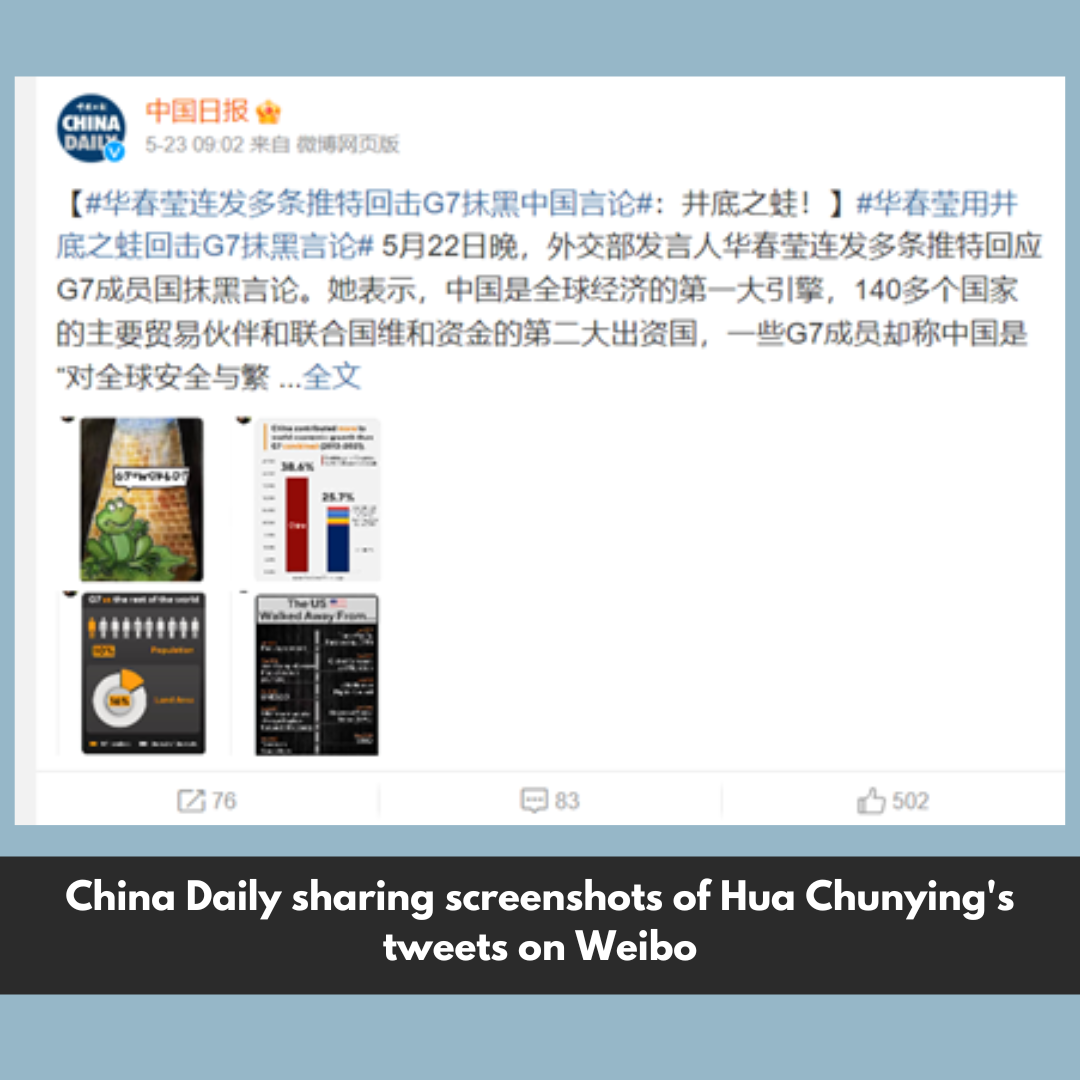
While China Daily was sharing Hua Chunying’s tweets on Weibo, several comments kept popping up on China Daily’s Weibo posts.
A netizen asked: “Why can’t we also join G8 and become big G8”
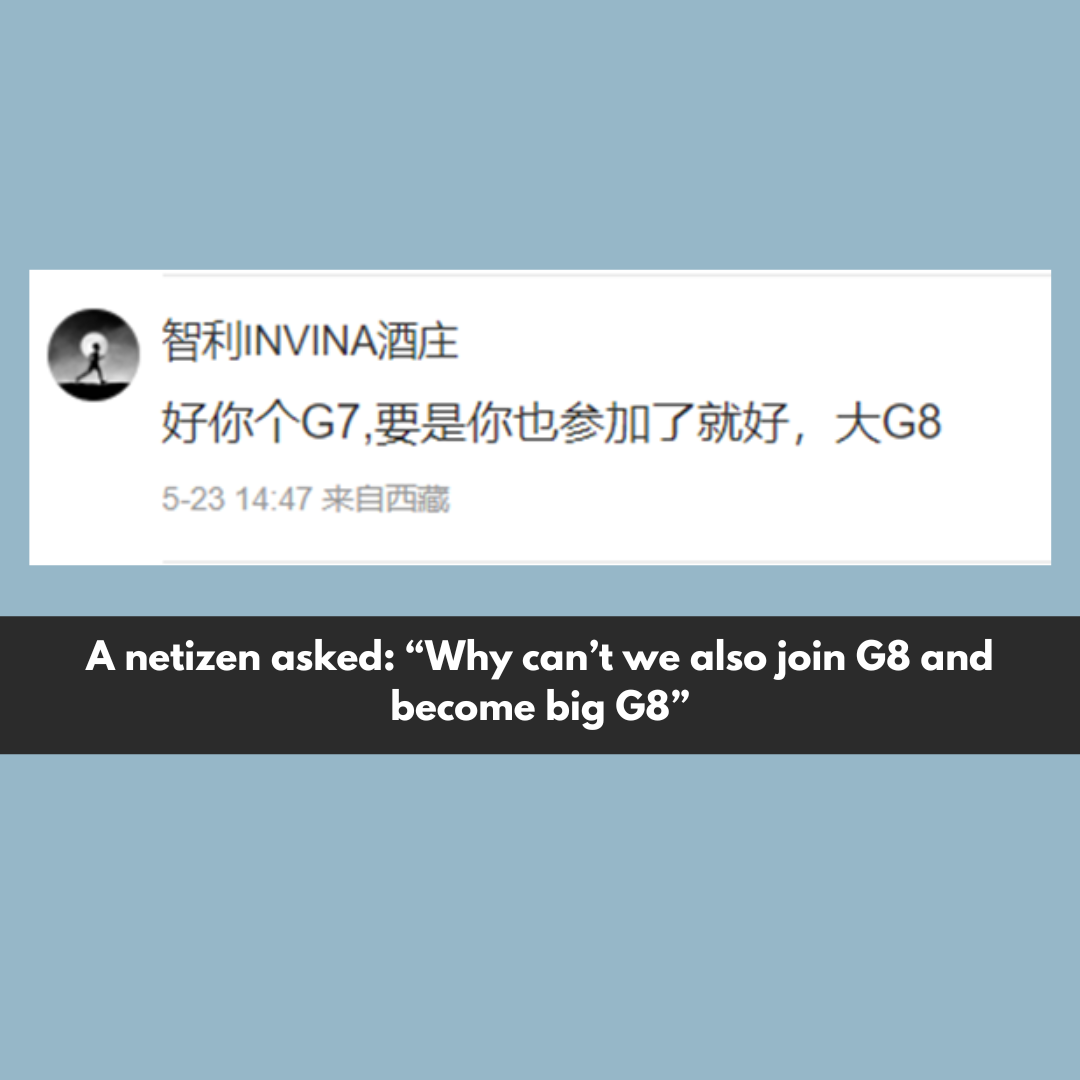
Another reference to Hua Chunying pointed out that she had “Not even 10,000 likes, nobody is watching her”.
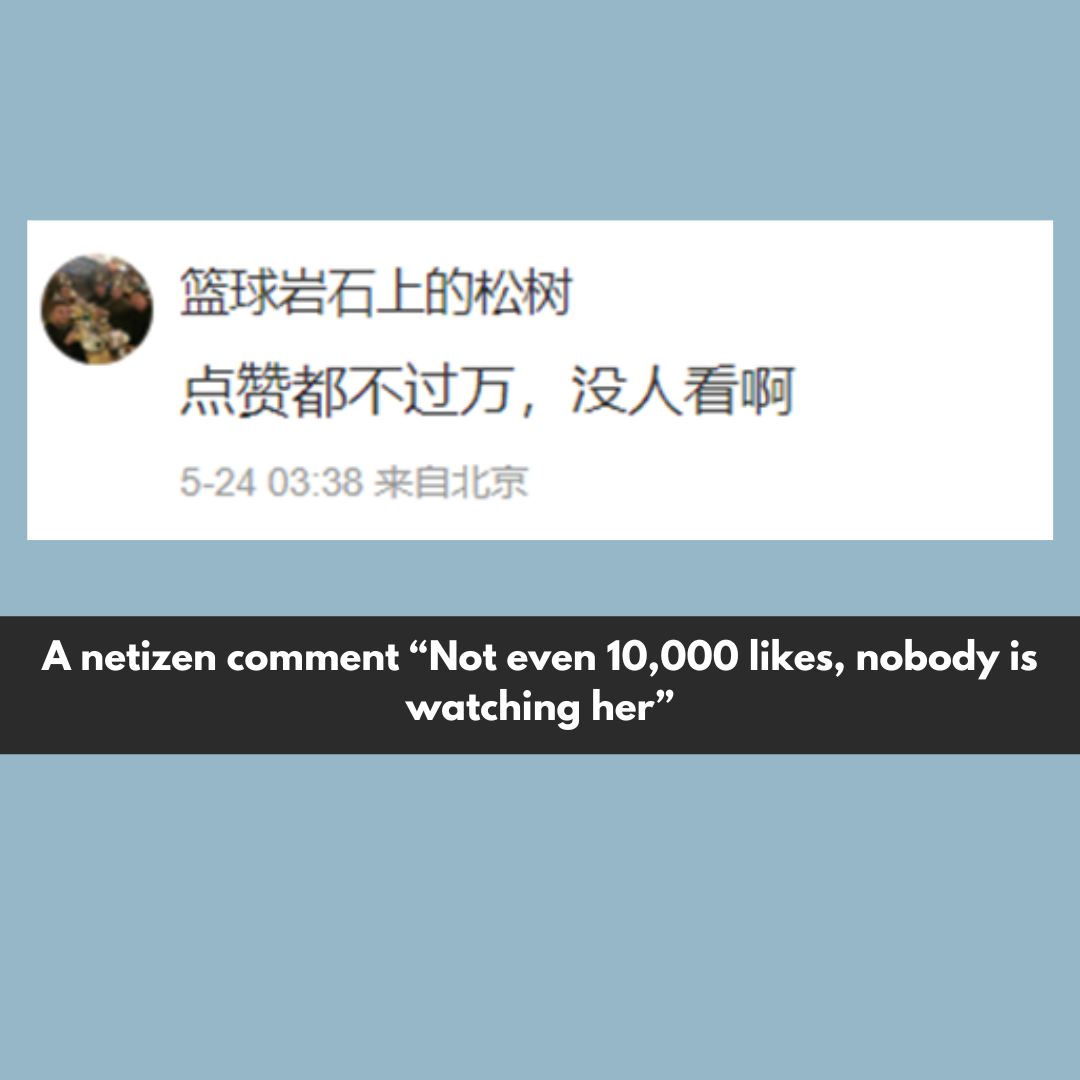
Another netizen wrote “Why is she on Twitter?”
